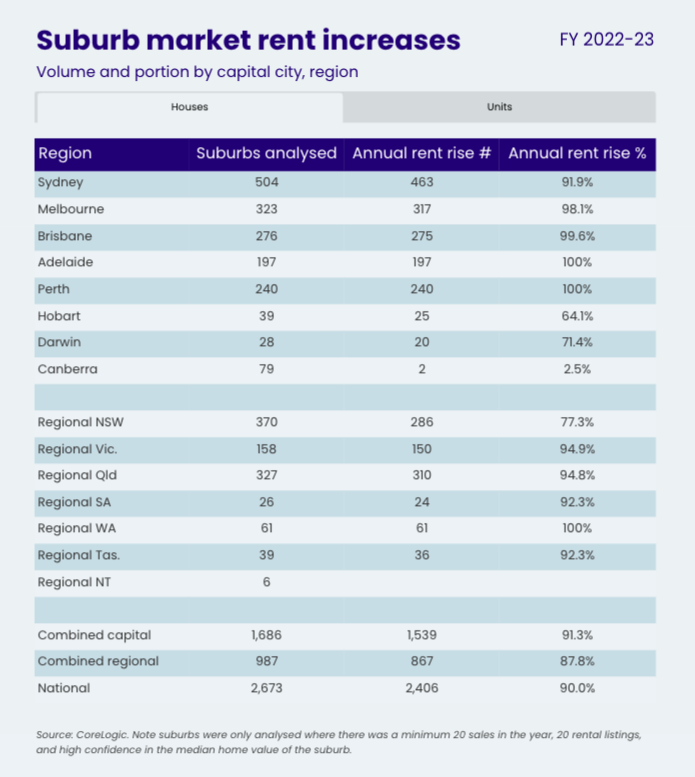

Rents have increased in more than nine in 10 house and unit markets across Australia over the 2022-23 financial year.
The latest suburb-level analysis by CoreLogic showed that nearly two thirds of unit suburbs recorded an annual rent rise of 10% or more, as did more than a third of house markets.
The uplift in rent values had been more widespread in Adelaide, Perth, and Regional Western Australia, where 100% of suburbs saw a year-on-year increase across both houses and units.

Kaytlin Ezzy (pictured above), CoreLogic economist, said a shortage in rental listings has continued to push up rent prices, with overall rental supply being negatively impacted by higher interest rates.
“Investors tend to shy away from the housing market during negative economic shocks,” Ezzy said. “The sharp rise in interest rates has coincided with a -23.6% fall in new housing investment lending between April 2022 and May this year, and this includes a slight recovery in investment lending in recent months, which has lifted 10.0% from a low in February this year.
“On the demand side, record levels of overseas migrants, many of whom rent in inner-city unit precincts, has bolstered rental demand this year, causing an imbalance between rental demand and supply.
“For Perth in particular, there is a persistent shortage of rentals, with total rent listings now about -50% lower than the historic five-year average.”
Over the year to June, all unit markets in Brisbane, Adelaide, Perth, and Darwin recorded rent value increases, while just three markets in Sydney (Long Jetty -3.7%, Wyong -2.5% and The Entrance -0.03%), two markets in Melbourne (Rosebud West -2.3% and Hastings -0.5%), and one market in Hobart (Claremont -0.2%) saw a decline in unit rents, CoreLogic data showed.
“Despite a few minor declines in the city's Central Coast region, Sydney units continue to record some of the strongest rental growth across the country,” Ezzy said. “Units in Sydney's Inner-city market of Haymarket recorded the highest annual rise, up 32.6% or $276 per week, followed by Georges Hall (31.3%) and Arncliffe (30.9%) in the city's Inner South West.”
At the other end of the spectrum, 18 unit markets in Canberra saw rent values fall over the past financial year. Canberra and Hobart were the only capital cities with rent listings that were trending well above the previous five-year average. As of late July, Canberra had total rent listings of nearly 2,400, which was higher than the historic five-year average of around 1,900 for this time of year.
Rental growth was more diverse across capital city house markets, with 147 of the 1,686 suburbs recording a decline. CoreLogic said this was heavily influenced by Canberra, where weaker population growth, looser rental supply, and poor relative affordability led to just two suburbs (Watson 0.8%, Crace 0.1%) recording an annual increase in house rents.
“While annual rental increases remain fairly geographically widespread, it’s likely we’ll see the pace of rental growth continue to moderate over the coming months, as cumulative rental growth pushes more renters towards their affordability ceiling,” Ezzy said.
The table below showed the suburbs where rents have increased the most in the past 12 months across houses and units.

Sydney dominated the ranks of highest growth across both house and unit markets, CoreLogic reported.
Use the comment section below to tell us how you felt about this.
